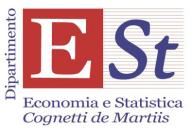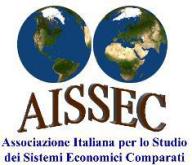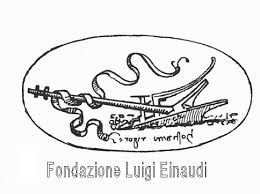Benedetta Falsetti[1], Elena Vallino[2] , Luca Ridolfi[1], and Francesco Laio[1]
We analyze the farm-gate prices of twelve representative crops in 1991-2016, considering data from 162 countries. The association between crop price and unit water footprint is investigated, also accounting for the country’s water scarcity and of the land footprint as possible confounding factors. We find that prices of staple crops (e.g. wheat, maize, soybeans, and potatoes) seem to embed the amount of water used for their production. Differently, food products whose production is more export-oriented (e.g. coffee, cocoa beans, tea, vanilla) exhibit weaker or negligible water price links. These variations may be ascribable to specific market dynamics related to the two product groups.
Water is crucial for all human activities, but agriculture consumes 70% of all freshwater withdrawals on the earth (FAO 2017). Moreover, every increase in the world population drives an increment in the demand for agricultural crops (Hejazi et al. 2014)). At the same time, researches estimated that an increase of one Celsius degree in global temperature is associated to a reduction of the renewable water resource availability by 20% for almost 7% of the global population (IPCC 2014). Moreover, higher incomes and urbanization trends generate an increase in consumption of livestock products that are highly water intensive (Molden et al. 2007). Therefore, according to these estimations water withdrawals are expected to increase constantly over time, despite undeniable progresses in technological solutions.
In this framework of growing water stress there has been a debate on the possibility to attribute a price to water (Young and Loomis 2014, Rey et al. 2019). Some scholars argue that assigning an economic value to water would improve the efficiency in its allocation, providing incentives for more sustainable patterns of consumption (Subramanian 1997, Rogers et al. 2002, Gomez et al. 2018).
On the opposite side, other streams of thought argue that water should not be considered as a private good because it is a fundamental human need and its allocation should not follow market dynamics (Brentwood et al. 2004, Savenije et al. 2002, Perry et al. 1997).
In the context of this debate, some scholars claim that agricultural goods’ prices do not reflect correctly the amount of water used for their production (Nature Food Editorial 2020, Hoekstra and Hung 2002). However, in this general framework, there is a lack of large scale data-driven analyses.
In this work we investigate whether the water consumption related to agricultural production is reflected in crop prices. We consider twelve crops which are cultivated worldwide over the period 1991-2016, encompassing 162 countries. We analyse the relation between the crop water footprints and crop prices, taking into account also the level of water scarcity at the country level and the role played by the land footprint, defined as the ratio between the harvested area and the tons produced for each crop. It is the reverse of the yield - ton/ha (Hogerboom and Hoekstra 2017).
There are two main innovative features in our work. First, we use a data-driven approach to explore the subject on a global scale, considering a wide temporal frame, and analysing a heterogeneous set of representative crops cultivated in an extensive range of countries. Second, we use a unique dataset that considers the time variability of the crop water footprint (Tamea et al. 2021).
In relation to some selected literature, our work aims to respond to the challenging issues raised, among others, by Hoekstra (2017), who argue that crops prices do not properly reflect the cost of the water used for their cultivation, and by Wichelns (2014), who discusses on whether crop water productivity estimates are useful for a better understanding of water management in agriculture. Our study is complementary to the one of Gower et al. (2016) that addresses the relation between water content and crop economic value and it discusses the clusterization of behaviours in the categories of subsistence and market crops. Moreover, it extends considerably the research of Fulton et al. (2019) who performed a similar analysis but considering only one single crop in a limited area (almond in California), in order to inform policy makers about the allocation of water in local agricultural practices.
We consider the following crops: wheat, maize, rice, soybeans, potatoes, apples, avocados, cocoa beans, coffee, cottonseed, tea, and vanilla. Wheat, maize, rice and soybeans are staple crops that, together with potatoes, cover roughly 60% of the global calorie intake (D’Odorico et al. 2014). Besides, the large-scale cultivation of the so-called cash crops such as cocoa, cottonseed, tea, coffee and vanilla is more oriented for export. Avocado and apple represent fruit items for tropical and temperate areas, respectively. These crops exhibit wide variability in average water footprint and price among them.
The data used in this study are the following: agricultural production (tons), farm-gate crop prices (in current US$, translated in PPP), hectares harvested of each crop (ha/ton), evapotranspitation (mm/ha) (FAO 2019), total per capita renewable water resource (m3/pc) (AQUASTAT 2019), and crop water footprint (m3/ton) (Tamea et al. 2021). All data we use are at the country scale and refer to annual values from 1991 to 2016. All data except total water resource are also crop specific. In order to assess whether the water component is reflected in the market price of the selected goods, we perform multivariate regressions, considering both all 12 crops together (all-product analysis) and each crop separately (single-product analysis). The crop price in deflated PPP is the dependent variable while we utilize different explanatory variables such as the crop water footprint, the land footprint, the evapotranspiration and the per capita water deficiency indicator, constructed through the data presented above.
On the one hand, results illustrate that the prices associated to the products which contribute the most to human nutrition (e.g. wheat, maize, soybeans) tend to reflect the amount of water necessary for their production. On the other hand, agricultural commodities that are traditionally cultivated for export purposes (the so called ‘cash crops’, e.g. cocoa, coffee, tea) seem to have prices that do not reflect their water footprint. Paradoxically, this second finding is related to more water intensive crops. Moreover, in general, crop prices tend to raise in the presence of greater per capita water scarcity at the country level. Rice displays a particular behavior since it belongs to the staple crops category, but it shows a pattern similar to the one of the cash crops. This could be due to the fact that although the water footprint of rice documented in the Asian regions is high, relying extensively on irrigation water, on average it does not contribute excessively to water scarcity in the region, given the abundance of water resources (despite high heterogeneity within the area) (Chapagain and Hoekstra 2010). This may lead to a detachment of the dynamics of water use for rice production from those linked to prices. Moreover, more research is needed on the role of subsidies in the prices of irrigation water, that may lead to an under-representation of water in the final farm-gate price of rice.
In general, we infer that the difference between staple and cash crops in the water-price relation can be ascribable to specificities in the production and commercialization dynamics of the two product groups, although more research is needed to understand these emerging behaviours. Although many exceptions may apply, staple crops are often cultivated in contexts of more competitive market dynamics, in which producers, in order to maximize profits, are more dependent on the value of inputs, including water. Differently, cash crops are often produced in situations of oligopsony and oligopoly, where the farm-gate price is more influenced by few producing or trading firms that are in a ''price-taker'' position with respect to the international markets. In oligopsony, few companies buy cash crops from many small producers and re-sell them on the international market at a fixed price (Piyapromdee et al. 2013, Porto et al. 2011). In an oligopoly, few corporations are directly involved in the extensive production of those crops. In both cases, large firms own the market power for setting final prices according to the incentives provided by the international trade trends and can afford to decouple the price making from the cost dynamics related to some inputs, such as water. Paradoxically this process concerns those products that require relatively more water for their cultivation if compared to the others included in this study. Few companies that produce cash crops have the freedom to decide the economic parameters of the commercialization processes and for example coffee experienced abrupt price changes over time (Henkel et al. 2015). The coffee markets are indeed controlled by a few corporate groups through a restriction of the export quotas with the aim of keeping the prices high (Distefano et al. 2019, Gilbert and Morgan 2013). As another example of market concentration, 80 percent of all cocoa exported by Sierra Leone is handled by one single firm (Bulte et al. 2018). From a theoretical standpoint, our results address the unequal consideration given to the different production inputs of crops, from which water is often excluded (Nature Food Editorial 2020). From a more practical point of view, the result may help in designing targeted solutions for contexts in which a clear tendency of overuse of water is present, such as one of the cash crops.
References
ACQUASTAT Statistical Database (2019), FAO.
Brentwood M. and Robar S. F. (2004), Managing Common Pool Groundwater Resources: an International Perspective. Boston, MA: Greenwood Publishing Group.
Bulte E., Richards P., Voors M. et al. (2018) Institutions and agrarian development. A new approach to West Africa. London: Palgrave Mcmillan.
Chapagain A. and Hoekstra A. (2010), The green, blue and grey water footprint of rice from both a production and consumption perspective. Value of Water Research Report Series No. 40 Delft, Netherlands: UNESCO-IHE Institute for Water Education.
D’Odorico P., Carr J. A., Laio F., Ridolfi L. and Vandoni S. (2014), Feeding humanity through global food trade. Earth’s Future 2 458–469.
Distefano T., Chiarotti G., Laio F. and Ridolfi L. (2019), Spatial distribution of the international food prices: Unexpected heterogeneity and randomness. Ecological Economics, 159 122–132.
FAO (2017), Water for sustainable food and agriculture. Rome: Food and Agriculture Organization.
FAOSTAT Statistical Database (2019), FAO.
Fulton J., M. Norton, F. Shilling (2019) Water-indexed benefits and impacts of California almonds, Ecological Indicators 96, 711-717.
Gilbert C. L. and Morgan C. W. (2010), Food price volatility. Philosophical Transactions of the Royal Society B: Biological Sciences, 365 3023–3034.
Gomez Gomez C. M., Perez-Blanco C. D., Adamson D. and Loch A. (2018), Managing water scarcity at a river basin scale with economic instruments. Water Economics and Policy 4, 1750004.
Gower, D. B., Dell’Angelo, J., McCord, P. F., Caylor, K. K., & Evans, T. P. (2016). Modeling ecohydrological dynamics of smallholder strategies for food production in dryland agricultural systems. Environmental Research Letters, 11(11), 115005.
Hejazi, M. I., Edmonds, J., Clarke, L., Kyle, P., Davies, E., Chaturvedi, V., ... & Calvin, K. (2014). Integrated assessment of global water scarcity over the 21st century under multiple climate change mitigation policies. Hydrology and Earth System Sciences, 18(8), 2859-2883.
Henkel M. et al (2015), 21st century homestead: Sustainable agriculture I. Morrisville, NC: Lulu Press.
Hoekstra A. Y. and Hung P. Q. (2002). Virtual water trade: A quantification of virtual water flows between nations in relation to international crop trade. Value of Water Research Report Series N. 11. Delft, Netherlands: UNESCO-IHE Institute for Water Education.
Hoekstra, A. Y. (2017). Water footprint assessment: evolvement of a new research field. Water Resources Management, 31(10), 3061-3081.
Hogeboom R. and Hoekstra A. (2017), Water and land footprints and economic productivity as factors in local crop choice: the case of silk in Malawi. Water 9, 802.
IPCC (2014), Climate Change 2014: Impacts, Adaptation, and Vulnerability. Part A: Global and Sectoral Aspects. Contribution of Working Group II to the Fifth Assessment Report of the Intergovernmental Panel on Climate Change (Field, C.B., V.R. Barros, D.J. Dokken, K.J. Mach, M.D. Mastrandrea, T.E. Bilir, M. Chatterjee, K.L. Ebi, Y.O. Estrada, R.C. Genova, B. Girma, E.S. Kissel, A.N. Levy, S. MacCracken, P.R. Mastrandrea, and L.L.White (eds.)). Cambridge University Press, Cambridge, United Kingdom and New York, NY, USA, 1132 pp.
Molden D. (ed.) (2007), Water for food, water for life: a comprehensive assessment of water management in agriculture. London: Earthscan.
Nature Food Editorial (2020), The true cost of food, Nature Food, 1, 185. https://doi.org/10.1038/s43016-020-0070-5.
Perry C. J., Seckler D., Rock M. T. and Seckler D. W. (1997), Water as an economic good: A solution, or a problem? Research Report n. 14, International Water Management Institute, Colombo.
Piyapromdee S., Hillberry R. and MacLaren D. (2013), Fair trade coffee and the mitigation of local oligopsony power. European Review of Agricultural Economics 41 537–559.
Porto G., Chauvin N. D., Olarreaga M. et al. (2011). Supply Chains in Export Agriculture, Competition and Poverty in Sub-Saharan Africa. The World Bank.
Rey D., Perez-Blanco C. D., Escriva-Bou A., Girard C. and Veldkamp T. I. (2019) Role of economic instruments in water allocation reform: lessons from Europe. International Journal of Water Resources Development 35, 206–239.
Rogers P., De Silva R. and Bhatia R. (2002), Water is an economic good: How to use prices to promote equity, efficiency and sustainability. Water Policy 4, 1–17.
Savenije H. H. (2002), Why water is not an ordinary economic good, or why the girl is special, Physics and Chemistry of the Earth, Parts A/B/C 27, 741–744.
Subramanian A. (1997), Water Pricing Experiences: An International Perspective. The World Bank.
Tamea, S., Tuninetti, M., Soligno, I., and Laio, F. (2021) Virtual water trade and water footprint of agricultural goods: the 1961–2016 CWASI database. Earth System Science Data, 13, 1–27.
Wichelns, D. (2014). Do estimates of water productivity enhance understanding of farm-level water management? Water, 6(4), 778-795.
Young R. and Loomis J. (2014), Determining the Economic Value of Water: Concepts and Methods. New York: Routledge.
* This essay is based on the following publication: Falsetti, B., Vallino, E., Ridolfi, L., & Laio, F. (2020). Is water consumption embedded in crop prices? A global data-driven analysis. Environmental Research Letters, 15(10), 104016. The authors acknowledge funding support provided by the European Research Council (ERC) through the project ‘Coping with water scarcity in a globalized world’ (ERC-2014-CoG, project 647473) coordinated by Francesco Laio.
[1] Department of Environment, Land and Infrastructure Engineering, Politecnico di Torino, Corso Duca degli Abruzzi 24, 10129 Torino, Italy
[2] OEET-Turin Center on Emerging Economies, Collegio Carlo Alberto, Piazza V. Arbarello 8, 10122 Torino, Italy









